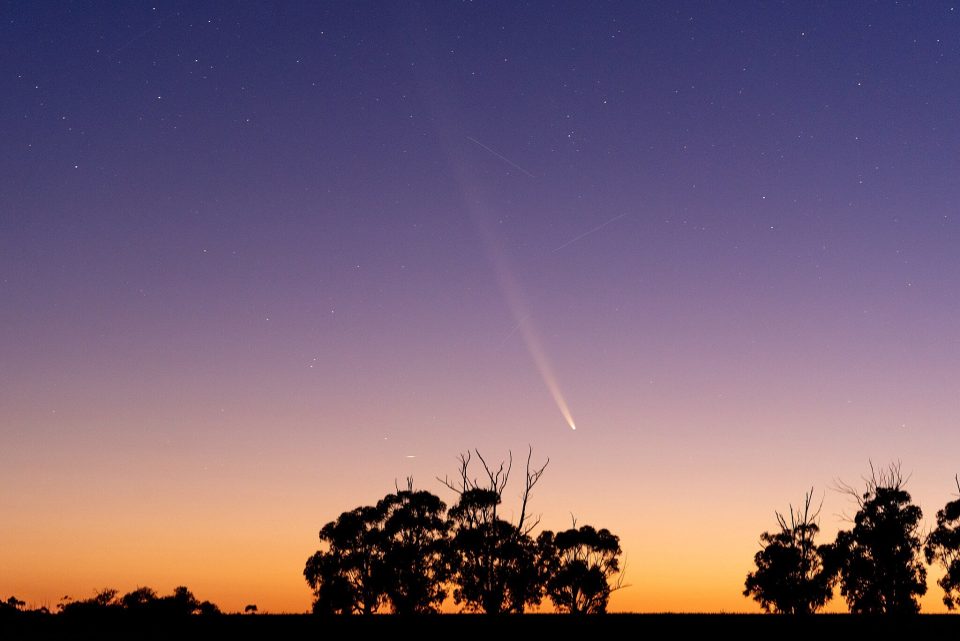
Comet Tsuchinshan-ATLAS, last seen by the Neanderthals 80,000 years ago made a spectacular pass over Greece and the rest of the world.
The comet, also known as Comet A3, has been dubbed the “comet of the century” due to its brightness and visibility, making it a must-see for any stargazer.
The comet is currently visiting our inner solar system, so seeing it is truly a once-in-a-lifetime opportunity.

Michelle Nichols, the director of public observation at the Adler Planetarium in Chicago, suggested that the 80,000-year span of its orbit takes the comet “out of the realm of the planets.” Indeed, the time it takes even the furthest planets in the solar system to orbit the sun is significantly less than 80,000 years.

Comet to be visible in Greece until late October
The comet was most visible during the day on October 7th and 8th and was at its most visible again in the evening from October 10th to 11th just 25 minutes after the sunset. However, it will remain visible in the sky until October 26th.
Comet A3 comes from the Oort Cloud – a giant spherical shell that surrounds our solar system made of icy space debris – and was first discovered in January 2023. It is named after the Purple Mountain (Zijin Shin or Tsuchinshan) Observatory in China that first found it, as well as the Asteroid Terrestrial-impact Last Alert System (ATLAS) telescope in South Africa.

Expert analysis of its trajectory found that Comet A3 likely completes an orbit around the sun every 80,660 years.
Aside from its incredible rarity, another thing that makes this comet special according to EarthSky is its rare ‘anti-tail’ – a long, thin line coming from the comet and pointing towards the sun, as well as its signature dust tail pointing away from the sun that appears as a long smudge in the sky.

The European Space Agency said that Comet A3 is the second brightest comet ever captured by its SOHO spacecraft, beaten only by Comet C/2006 P1 in 2007.
The comet’s nucleus is clearly visible, surrounded by a dusty coma and trailing an impressively long tail,” the agency observed.
Unlike asteroids, which are entirely made of rock, comets are made up of ice, rock, and gas. As they approach the Sun, the warmth causes the ice to change into gases and releases dust particles trapped in the ice, which is what causes their beautiful tail.
Robert Massey, Britain’s Royal Astronomical Society‘s deputy executive director, said: “Bright comets are quite rare, so if you do get a chance to see one, take a look, even if you have to use a pair of binoculars to pick out the tail and features. They’re absolutely beautiful.”
Related: Dark Comets May Have Brought Water to Earth, Study Says
